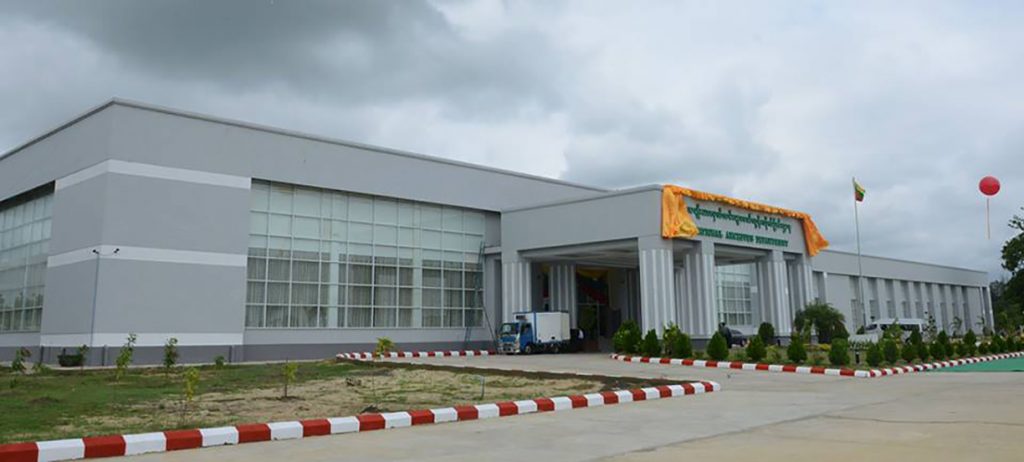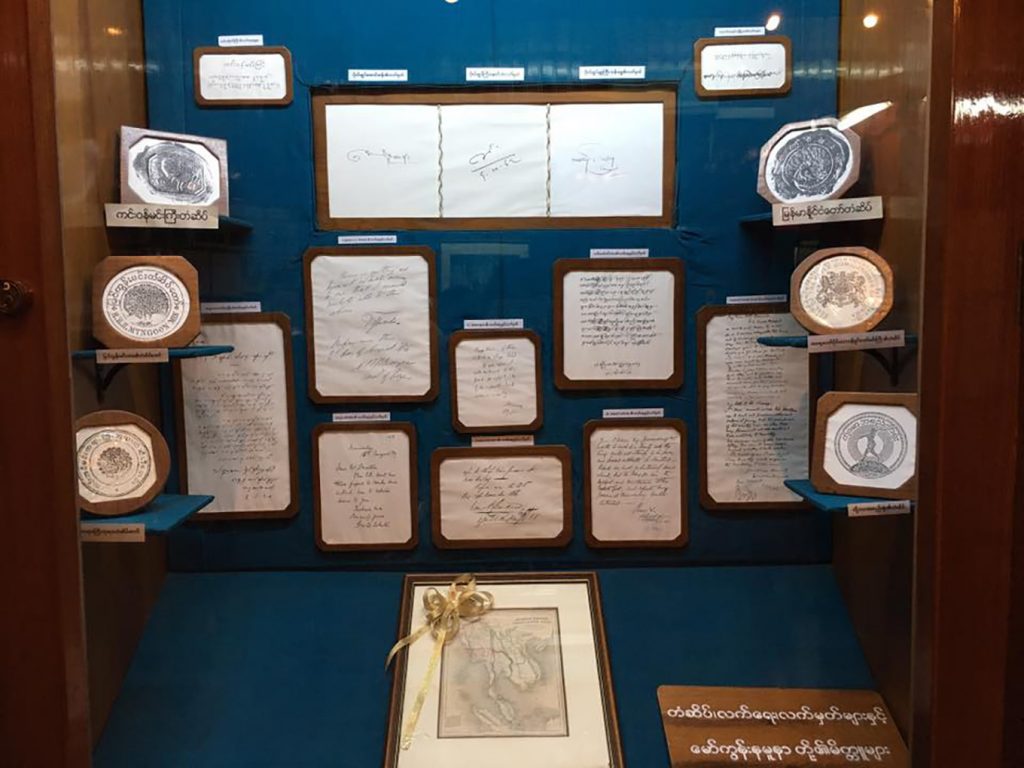April 04, 2020
Those studying various arts and science including researchers and experts search literary evidences at libraries and other materials at museums so as to refer them in research works. They also rely on archives to have historical evidences.
Archives and records
The Myanmar dictionary defines the archives which mean the literary works compiled memorable for long term existence as well as the documents under preservation. The Law on National Records and Archives states, “The records mean documents, inscriptions, folded papers, palm leaves, manuscripts or printed literature compiled or accepted by any government department or other organization or a person. The word shall comprise alphabets, sounds and TV documents recorded through machinery or electricity or other way.”
The law defines the meaning of archive, saying that the archive means the records which shall be designated as archives scrutinized by the archive supervisory committee with its remarks to preserve such kinds of records for many years because of containing evidences and facts related to history, culture heritage and governance of Myanmar.
The records gathered at the Myanmar Archives were scrutinized by the archive supervisory committee formed with experts and scholars in 1991 in accordance with 11 points of archive values. The committee sets the records meeting the set standards as archives. As such, all archives are records but every record cannot be approved as archives.
National Archives
The venue where historical archives are systematically kept is the archive building.
As global countries established archives, the National Archive of France opened in 1790 is famous as the largest one across the world. Such archive initiated its functions of storing records as of 625 AD.
The International Council on Archives was constituted as a professional organization in Paris of France on 9 June 1948. Formation of the council aimed to effectively manage maintenance, care and usage of record and archive experts from various countries for ensuring long term existence of world archive heritages. As such, its founding day which falls on 9 June was designated as the International Archives Day.
In Myanmar, Archives in Yangon and Nay Pyi Taw hosted the exhibitions to mark the 70th Anniversary of International Archives Day on 9 June 2018 by holding the paper-reading session on art of archives. The celebration of the International Archives Day aimed to enable the people to understand the role of the archives and art of archives. Moreover, it meant prevention of loss of country’s historical and cultural record heritages and perpetual existence of these objects.
Among eminent archives in Myanmar, each of the national archive is opened in Yangon and Nay Pyi Taw whereas the Defence Services Historical Research Institute is operated in Nay Pyi Taw. These archives store the records of national cause and high historical value of the State.
The National Archives Department was formed with 34 staff members under the Ministry of Planning and Finance on 15 March 1972 in order to manage functions of the national archives of Myanmar. The institute took over rare books and printed archives related to administration of colonial era from the library of the secretariat. Likewise, the National Archives Department took over files of archives from 1853 to 1948 and remaining notes in 1835 from the Ministry of Foreign Affairs. The department was put into service at No 114 on Pyidaungsu Avenue in Dagon Township in July 1973. It launched duties and functions with 114 officers and staff members of organizational setup. The Law on National Records and Archives was enacted in 1990.
According to the UN Development Programme in 1982, the strengthening of National Archives Project was implemented. Experts from UNESCO gave theoretical and practical training as well as machinery assistance to those of the department. Staff members from the department were sent abroad to further study archive science and technologies.
The Department of National Archives (the National Archives) of Myanmar joined as member of the International Council on Archives (ICA) in 1991 and the Southeast Asian Regional Branch of the International Council on Archives (SARBICA) in 1993. Myanmar hosted the 11th general conference of SARBICA in 1997.
Thanks to cooperation with international archives, the National Archives could perform collection of archives and records, preservation, and dissemination of information and evidences to the people through modern technologies meeting international standards.
The National Archives is undertaking its functions not to damage administrative evidences, to safely store them and give services to relevant departments as well as local and foreign researchers for taking records and archives as references. The department takes over records on administration, policy affairs and economic matters related to administrative machinery of the State from Union ministries, and region and state governments in accordance with the Law on National Records and Archives.
With regard to gathering records and archives, the department systematically stores records on papers collected from Union ministries and region and state governments under control of temperature and moisture. The records easy to broke are sterilized and bleached with the use of acid as well as maintained with the use of tissue through archive technologies.
The archives are carrying out collection of records, maintenance of such records through technologies, and supporting the people in searching records and archives as references.
Historical records and archives from the Archives
The National Archives has been maintaining original treaties, agreements and writs (1947-2015) and the Independence Charter (1948) including various kinds of records and archives such as the palm leaves of General Maha Bandoola (1824 AD), the Treaty of Yandabo (1826 AD), the administrative reports of Burma (1856-1935), Burma Gazettees (1862-2009), announcements of the government (1880-2009), the Independence Charter in Japanese era (1943), the Panglong Agreement (1947), Aung San-Attlee Agreement (1 January 1947), and Nu-Attlee Agreement (17 October 1947). Moreover, the department stores documentary photos, manuscripts and royal seals.
In addition, the department systematically keeps archives in British era, the documents related to situations of Myanmar before the Second World War from 1939 to 1942, the documents on war of the Second World War in early 1942, records on British military administration in 1945, the records on civil administration re-governed by the British governor in Myanmar as of 1 October 1945, records on administration arranged by the executive government of the governor to Myanmar in February 1946, the records on changing administrative system from 1948 to 1950, the records on Pyidawtha system from 1952 to 1956, the records of the care-taker government in 1958, the records of handing over the power to Pa-Hta-Sa government in February 1960 after holding the elections due to concluding the term of the parliament in 1956, the records on formation of the Revolutionary Council on 2 March 1962, and the records on formation of the government of the State Law and Order Restoration Council in 1988.
Similarly, more than 37,000 files of records such as management and administration records of the State in the reigns of King Mondon and King Thibaw, dispatch records on relations with the lower Myanmar in the reign of King Mindon, and administrative records of British are systematically stored at the department.

National Archives (Nay Pyi Taw)
The second archive of the Department of National Archives was put into service on Razathingaha Road in Ottarathiri Township of Nay Pyi Taw on 22 May 2015. After opening the second archive, I grasped the opportunities to visit it under the arrangements of the Ministry of Culture (present Ministry of Religious Affairs and Culture).
The Nay Pyi Taw National Archives is formed with booths of archives in successive eras, rooms of storing archives and records, and reading room for references and readers can easily search things they wish to know at the reading room for references through the national archives information system. Arrangements have been made for readers to have microfilms via database. Archives and records not on paper are being stored through digital technology.
The National Archives preserves historic archives and records, national characteristics and cultural heritages. As part of evidences for citizen rights, archives can be submitted as evidences at the court. Likewise, government departments can take references to the records and archives. That is why the archive plays a key role in operating the administrative machinery of the State.
Duty and functions of the national archives of Myanmar aim to preserve historic archive evidences of the State for a long run, give services for research process and reference, and disseminate the important role of the art of archive among the people. As such, the national archives are invaluable for those wishing to search records and archives as references. (Translated by Than Tun Aung)



